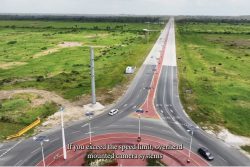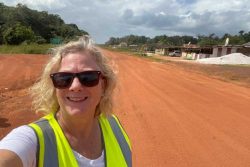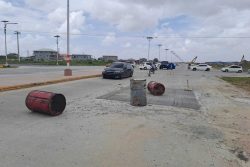It is debatable whether the 2025 budget poverty reduction allocations are truly adequate to combat poverty levels, particularly in Guyana’s hinterland regions. These are Regions One, Seven, Eight and Nine, all of whom, according to the 2012 Census Report, ranked the highest on Guyana’s Marginality Index. With food prices in these remote areas experiencing sharp increases—exacerbated by inflationary pressures—the government’s allocation in budget 2025 of substantial funds toward poverty alleviation is both timely and necessary. However, the question remains: is it enough?
At the forefront of this budget is the allocation of $90 billion for cost-of-living relief, support for vulnerable populations, and income improvements. In addition, the government has announced a $5,000 increase per pensioner to help the elderly cope with escalating living expenses. While these measures are commendable, a closer analysis reveals that their effectiveness hinges on whether these funds directly address the unique challenges faced by hinterland communities. In communities such as Kaikan, Baramita, and Aishalton, staple items like rice, flour, and chicken are significantly more expensive than in urban centres like Georgetown. For these allocations to make a meaningful difference, they must be accompanied by targeted interventions such as transportation subsidies, food price stabilization programmes, and enhanced support for local agricultural production. Not only are these measures non-existent in Budget 2025, but without such, the benefits may not truly and fully offset the higher costs that these communities endure.
The increase in pension benefits while a positive step, its impact must be critically evaluated against the backdrop of inflation. In regions where the cost of essential goods continues to surge, the nominal boost in pension income may not suffice. A rigorous comparative analysis between this increase and the actual price hikes in the hinterland is necessary to determine if pensioners will truly experience improved living standards or if inflation will gradually erode these gains.
Moreover, an examination of regional budget allocations reveals an enduring imbalance. Historically, Guyana’s economic policies have favoured the coastland, with most investments in infrastructure, health, and education concentrated in urban centres. For example, according to Vice-President Bharrat Jagdeo, Guyanese in the coastal regions will experience a reduction in energy costs when the Wales Gas-to-Shore energy project comes on stream. Budget 2025 appears to continue this trend. Although $9 billion was set aside for hinterland development—targeting improvements in road networks across Central Rupununi, Issano, Karisparu, and Monkey Mountain—this investment pales in comparison to the broader infrastructure projects underway along the coast. Such discrepancies are concerning – is hinterland development being prioritized sufficiently, or are these regions receiving merely a fraction of the necessary support?
In considering a more equitable approach, it is important we recognize that equality in allocation does not necessarily equate to fairness. Hinterland communities, which face higher costs for basic goods and endure logistical challenges and historical underinvestment, require proportionally greater support to close the gap with urban centres. To this end, one wonders whether the current policymakers had emphasized equity over equality by tailoring interventions to the specific needs to all communities. The answer is obvious.
Beyond immediate relief measures, a data-driven evaluation of regional economic conditions is essential. A granular analysis of price indices and household incomes in the hinterland could shed light on the true impact of inflation on vulnerable populations. Economic activities are concentrated in the public sector (education, health and administrative) and private sector in the extractive and service sectors. Furthermore, the establishment of a transparent monitoring and feedback mechanism is crucial, perhaps including village-by-village, NDCs and RDC GDPs and price indexation. Such systems would not only ensure accountability in spending but also allow for real-time adjustments to policy implementation based on local needs.
It is clear that while the financial figures in Budget 2025 give rise to optimism, this in turn could only realize the promise of improved livelihoods becoming a reality for all Guyanese regardless of whether they reside in the bustling urban centres or the remote hinterland regions if the government embraces a shift from a one-size-fits-all approach to one that prioritizes tailored, region-specific strategies. Increasing transparency in spending, instituting robust monitoring frameworks, and rebalancing infrastructure investments to give greater weight to hinterland development are all steps in the right direction – one that provides a balanced and effective poverty alleviation strategy that truly leaves no region behind.








